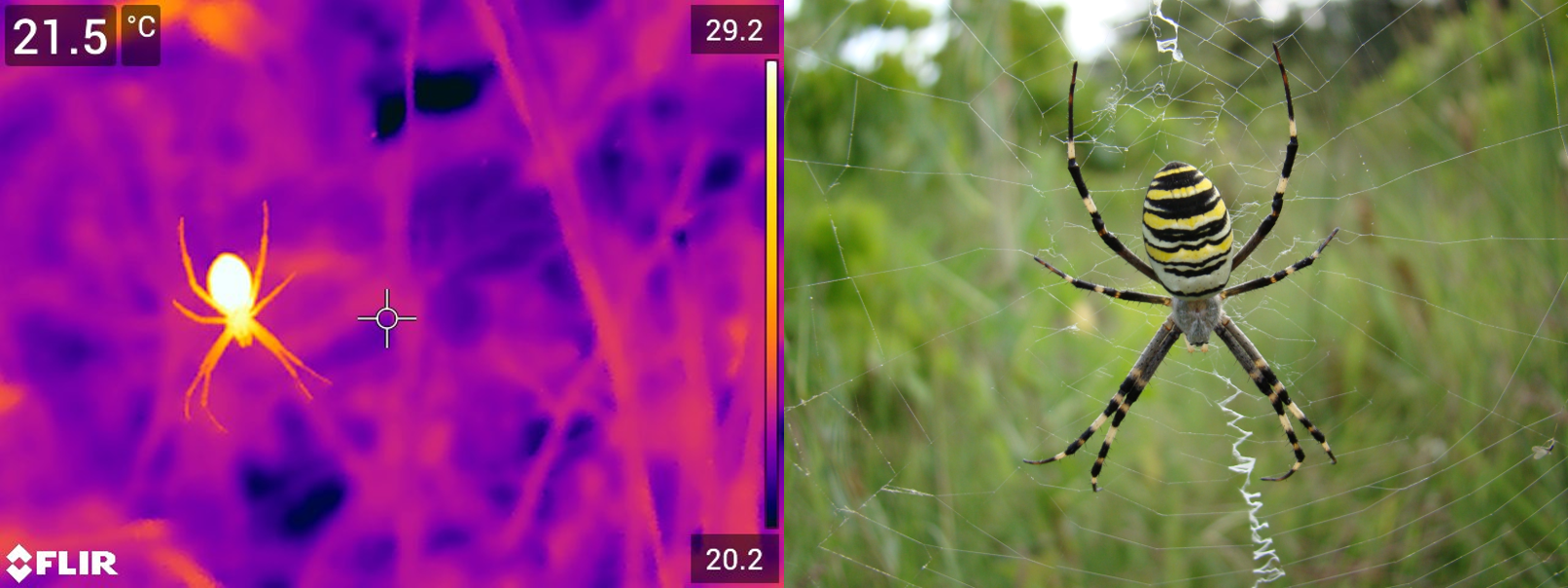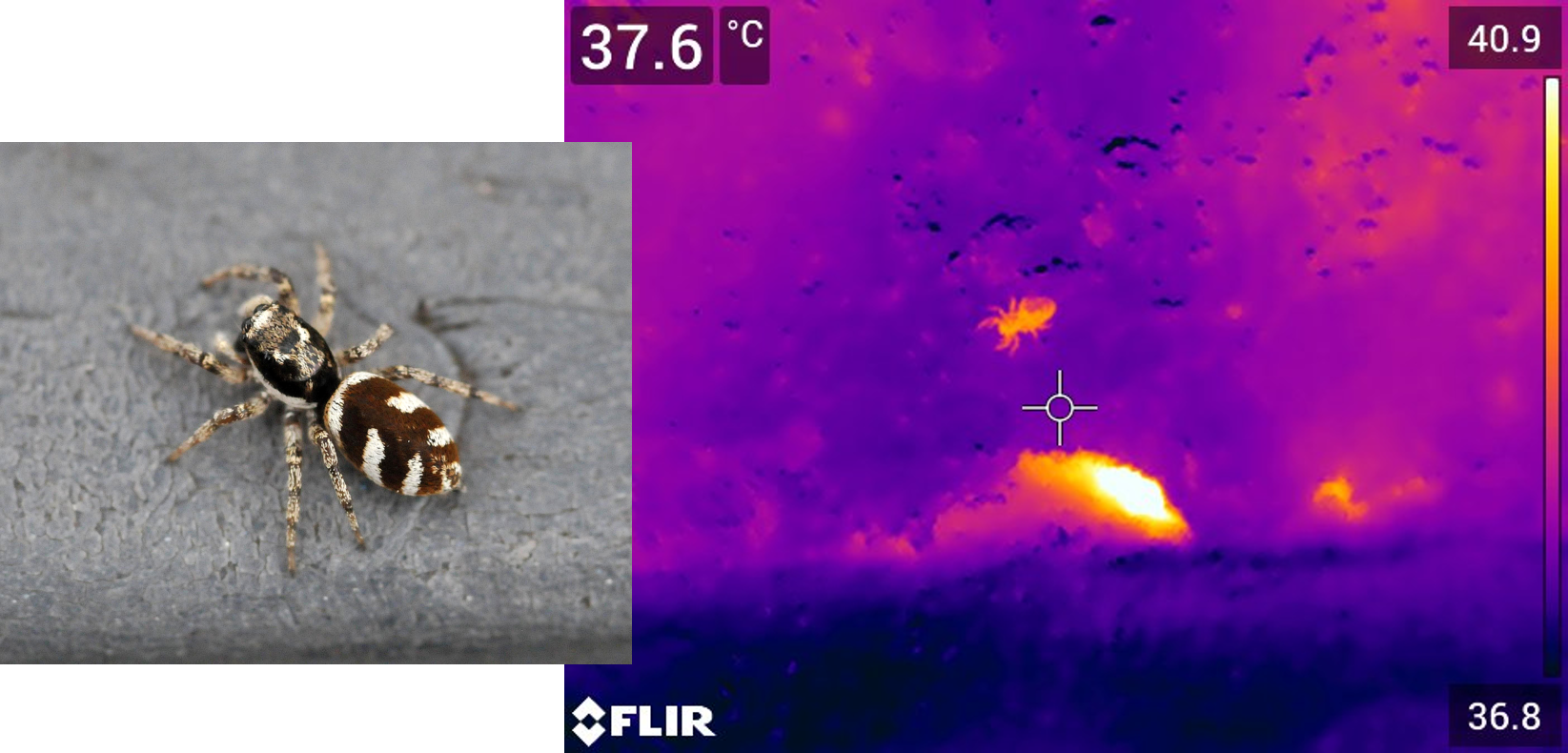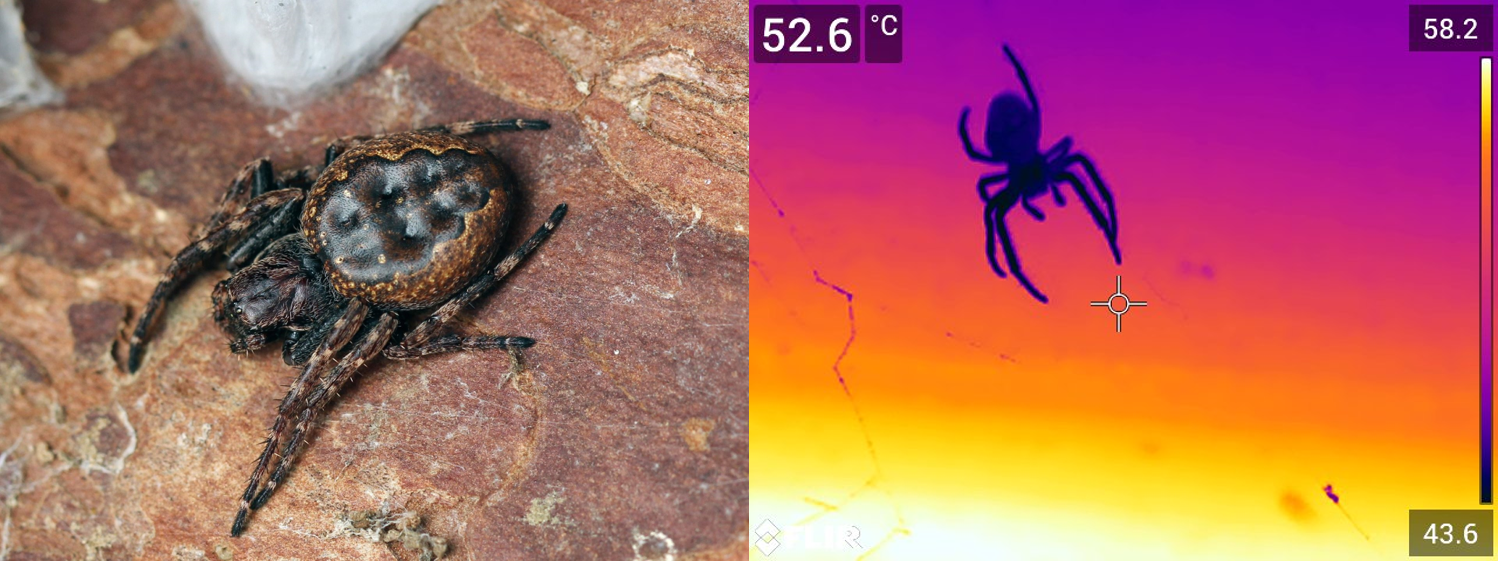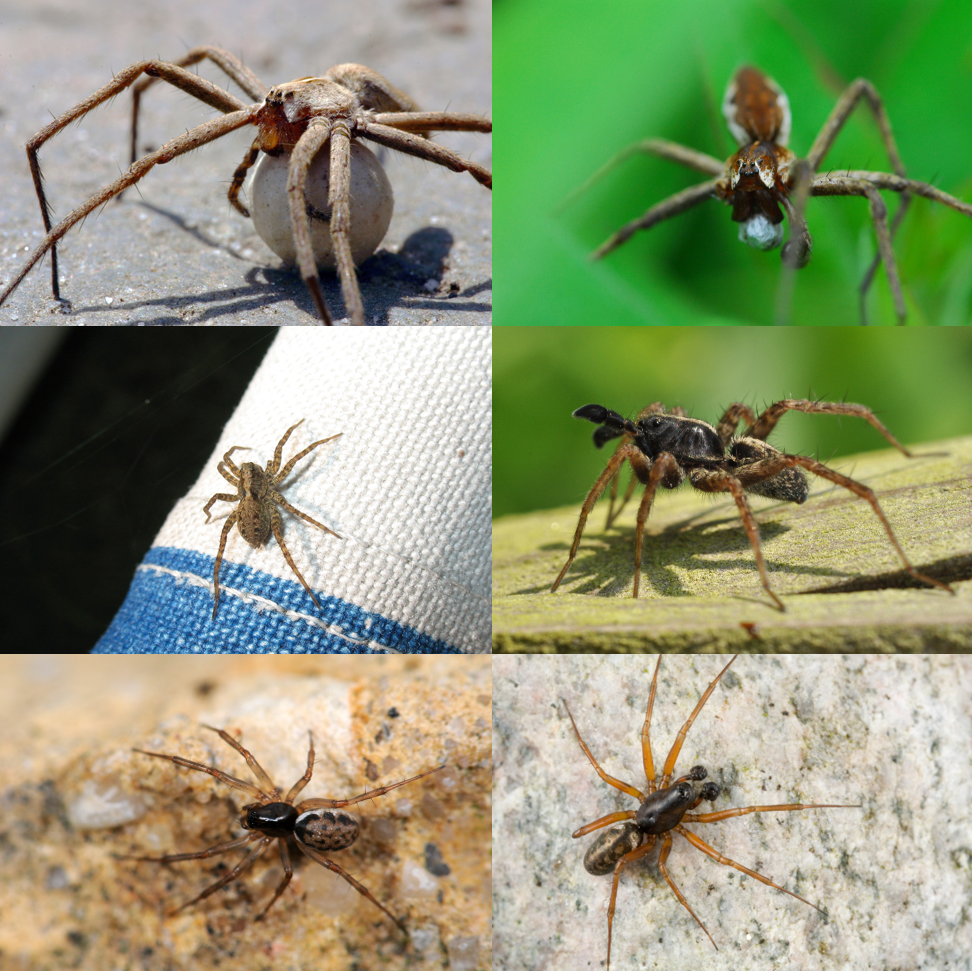Blog
Why is colour important for spiders?
Colour has many functions in spiders, for example the bright colours of male jumping spiders are a seductive display for females and the brown color of many wolf spiders is a way to camouflage themselves from predators. But did you know that colour can also play a role in heating and cooling? The principle is simple: dark surfaces heat up more and faster than lighter surfaces. This is because a dark colour absorbs more light (a black hole absorbs almost all light), which releases heat. A lighter colour reflects more light and therefore stays cooler.
That is why the color of a spider is very important because spiders are cold-blooded animals, meaning that they do not produce heat themselves and therefore assume the temperature of the environment. When it is warm outside, they get warm. If it is cold outside, they get, you guessed it, cold. The opposite are mammals, like humans, we actually always have a more or less constant temperature. A dark spider will therefore heat up more than a light spider.
But how hot can a spider get? With the heat camera we went out in July during a heat wave and we found some spiders in the sun!
Among the grass we found a Wasp spider, which easily reaches 30 °C Celsius. On a white wall we found a Zebra Jumping spider that had a somewhat higher temperature: 39 °C. This species is often found on warm walls and feels completely at home there! The record was broken by a dark Walnut Orb Weaver with a temperature of 43 °C. A bit strange, as this is actually a night-active species that is normally not seen during the day. This particular female hides under the rain gutter, it was probably a bit too hot there and she tried to cool down in the open air.
It is clear that spiders in the sun can get surprisingly hot! Perfect for investigating whether a light color can help them to stay cool!

Wasp Spider (©Bram Vanthournout, Danny Declercq).

Zebra Jumping spider (©Luc Regniers, Bram Vanthournout)

Walnut Orb Weaver (©Paul en Marianne Wouters-Horemans, Bram Vanthournout)
Well, you can do that by looking at the reproductive organs! In a female the epigyne is situated on the underside of the abdomen. In a male, there are two thickened pedipalps at the front of the head. They look like two "boxing gloves" and are usually clearly visible! So if you see two thickened and hardened structures on the head, then it is certainly a male. A female also has two pedipalps, but these are not used as a reproductive organ and are therefore not thickened.
P.S. The reproductive organs in spiders are a very important identification characteristics and in many cases often the only way to be able to say with certainty what species it is!
Females (left) and males (right). Top row: Nursery web spider (Pisaura mirabilis), male has only one pedipalp left and holds a nuptial gift in his jaws (©Leo Vaes en André Hermans). Middle: Spotted wolf spider (©Richard Louvigny en Danny Declercq). Lower row: Herb Hammock spider (©Pierre Oger en Bert Pijs).



